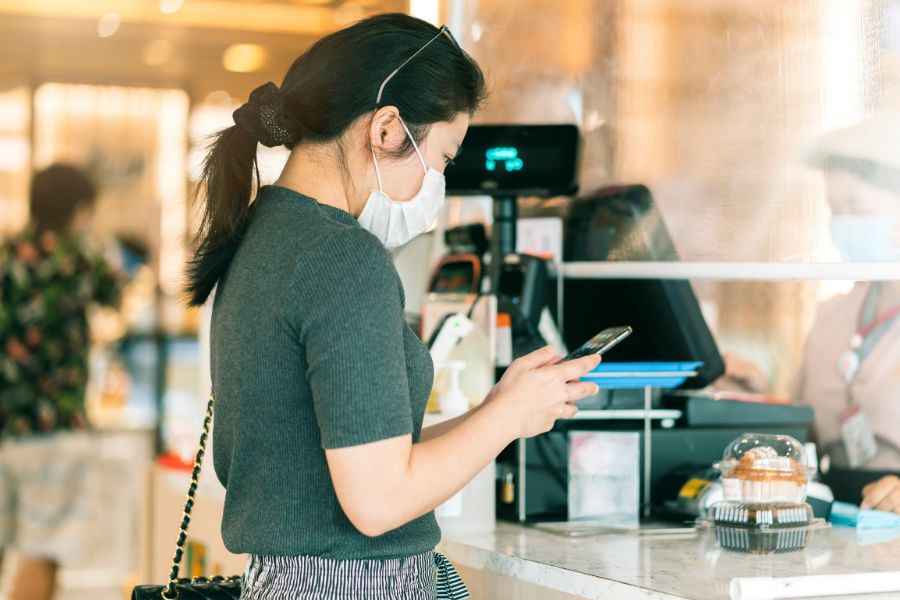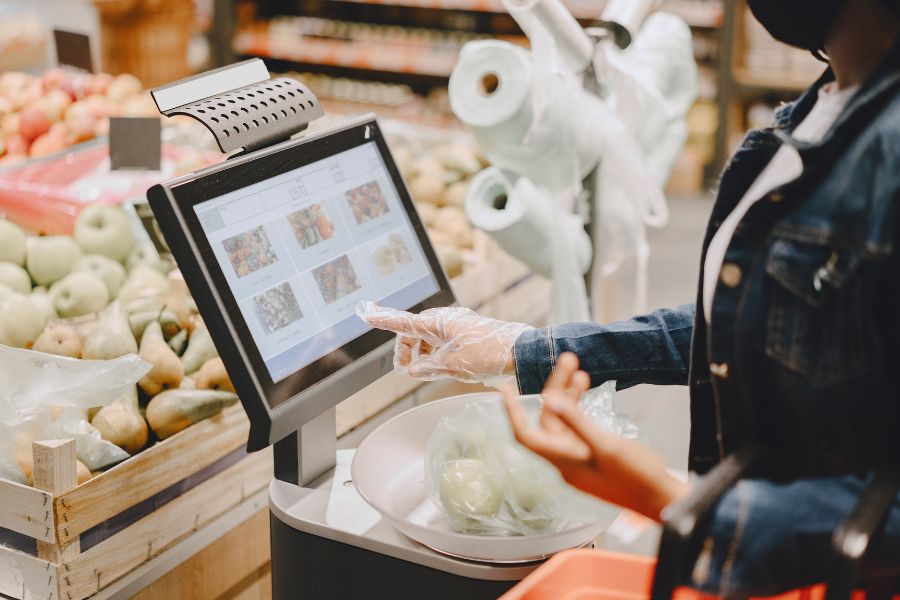Modern retailers in Thailand are searching for ways to reach more shoppers through online and physical channels. An ecommerce POS system Thailand can help store owners handle transactions, monitor inventory, and keep track of customer activity. The question is which solution can suit your business best, given the range of options and features. This article explores the current state of POS systems in Thailand, highlights must-have functionalities for a quality solution, and presents five popular choices in the market.
Highlights:
- An efficient e-commerce POS system in Thailand should handle multi-channel sales, support local payment methods, and comply with tax regulations.
- Retailers should assess transaction volume, integration needs, and localization features to determine if a POS system aligns with their business operations.
Overview of the POS Market in Thailand
Thailand’s retail market has grown fast in recent years, driven by higher internet usage and shifting consumer habits. According to Statista Market Insights, revenue in Thailand’s eCommerce market is projected to reach US$22.84 billion in 2025, with a CAGR of 9.01% from 2025 to 2029, boosting the market volume to US$32.25 billion by 2029. Some sellers rely on pop-up events and social media, while others operate large networks of physical shops. In many cases, store owners who blend physical and online channels attract bigger audiences and see more consistent sales.
Many entrepreneurs in this region have started or expanded their online presence. However, relying on separate systems for offline and online orders can create mismatched data and operational inefficiencies. That is why an ecommerce POS system Thailand supports real-time inventory monitoring, unified sales reporting, and a smoother shopping experience. Sellers looking to keep up with a market that is steadily adopting digital payments may find a specialized POS system to be a solid step forward.
A Reliable Ecommerce POS System Should Have These Features
A solution that manages both online and offline channels can ease daily operations. Listed below are essential features that help businesses improve efficiency and ensure that customers are satisfied.
1. Inventory management integration
This feature keeps stock levels consistent across sales channels without the burden of manual entry. When an item is sold in a physical outlet, the system automatically updates inventory counts on the online store, reducing the risk of overselling or running out unexpectedly. A dynamic inventory tool can also give insights on restocking schedules and sales trends.
2. Payment integration for online and mobile payments like contactless card processing methods and Apple Pay
Many Thai shoppers appreciate payment convenience and speed. A POS system that allows contactless cards, digital wallets, and Apple Pay can set a business apart by reducing checkout times and cutting back on the use of cash. Centralized tracking of all payment types in one platform can simplify financial reconciliations.
3. Customer management
Retailers often benefit from having a central record of past transactions, preferences, and even customer feedback. A POS tool that automatically updates online and offline customer data allows retailers to offer personalized deals, track loyalty points, and spot buying patterns. This leads to stronger customer relationships and can turn one-time buyers into repeat shoppers.
4. BOPIS or curbside delivery
Buy Online, Pick Up In-Store (BOPIS) or curbside services give customers flexibility and faster access to products. A POS that supports these methods lets shoppers order remotely through an online store, then collect their purchases from a physical location without waiting in line. It can boost sales by appealing to consumers who prefer instant or near-instant fulfillment.
5. Returns and exchanges
Efficient handling of product returns and swaps is essential for maintaining customer satisfaction. A POS system that links both channels in real time ensures that staff can look up order data quickly, verify proof of purchase, and complete returns without confusion. This streamlined approach often leads to higher shopper trust and repeat visits.
6. Promotion and discount
Many shops run seasonal promotions, bundle deals, and flash sales. A capable POS helps retailers apply these promotions at checkout, whether a buyer is in a physical branch or placing orders on a website. That consistency preserves brand identity and prevents the frustration of discovering mismatched offers.
7. Loyalty programs (reward points, store credit, and gift cards)
Shoppers who take part in loyalty programs return more often. An integrated POS enables customers to earn points, redeem credit, or use gift cards in physical or online stores. This encourages customers to stay engaged and helps retailers gather data on spending activity.
8. Email marketing integration
Email remains one of the leading tools for nurturing relationships with shoppers. By connecting POS data with an email platform, it is possible to send personalized product updates or reminders to people who have made past purchases. Automated messages can also help re-engage inactive customers and drive more visits.
9. Omnichannel fulfillment
Many Thai businesses that sell nationwide or operate multiple branches need a central system to manage orders and shipments. A POS that supports multi-warehouse and multi-location fulfillment ensures that each location knows which items to dispatch without confusion. It also helps customers receive their deliveries in a timely manner, which is vital for brand reputation.
10. eCommerce sales reporting
Accurate reports are a cornerstone of smart decision-making. A combined view of offline and online sales reveals which products are most popular, which promotions are working, and whether certain store branches are performing above average. This data helps with inventory planning, staffing decisions, and financial projections.
A system that brings all these features together can streamline daily tasks and create a unified shopping experience. This often translates to better sales, fewer operational errors, and long-term growth.
Top 5 Ecommerce POS Systems in Thailand
The market offers several options for an ecommerce POS system Thailand. Each has a different set of strengths, so the best choice depends on your specific needs. The five solutions below are known for supporting local businesses across retail, F&B, and more.
1. ConnectPOS SEA
ConnectPOS SEA works with platforms such as Shopify, WooCommerce, Magento, BigCommerce, and NetSuite ERP. It synchronizes data across channels in real time, which helps when businesses sell through pop-ups, events, or in-store counters. ConnectPOS SEA also integrates with a Progressive Web App for consumer self-checkout and mobile payments.
Key features:
- Multi-channel & Real-Time Sync: Manage sales across physical stores and online with instant updates on inventory, pricing, and customer data, no manual entry needed.
- Customizable Payment Methods: Enable multiple payment options like digital wallets, international cards, QR codes, and Apple Pay for fast, convenient checkouts.
- Diverse Promotion Management: Easily set up discount codes, gift vouchers, and combo pricing that sync across all channels, ensuring every deal reaches your customers.
- Customer Care Software: Centralize customer lists and purchase histories to support loyalty programs, point systems, and personalized offers.
- Flexible Offline Mode: Process transactions even without an internet connection, with automatic data sync once connectivity is restored.
- PWA Consumer App Support: Allow customers to self-checkout by scanning product codes on their mobile devices, reducing staff workload and enhancing efficiency.
- Multi-Branch Management: Consolidate sales data from all locations for easy monitoring of revenue trends and smarter inventory decisions.
- Detailed Sales Analytics: Access concise reports on daily revenue, margins, shopping trends, and best-selling products, with filtering options for informed business choices.
These concise features make ConnectPOS SEA a standout option for Thai retailers seeking a modern, integrated, and reliable management system.
2. UP Solution
UP Solution by P2C offers a mix of POS hardware and software. It supports real-time data management across multiple channels, enabling retailers to track sales, promotions, and customer trends.
Key features:
- Purpose-built hardware: UP Solution provides card reader stations, kiosks, and countertop devices. This is convenient for sellers who want a single vendor for both software and physical devices.
- Broad industry coverage: Businesses ranging from retail to hospitality can set up the system with add-ons for appointment booking, loyalty tracking, and more.
3. Synature
Synature’s proMiSe POS is popular among restaurants and retailers in Thailand. It prioritizes advanced inventory management tools, branch-level control, and data sharing between central headquarters and storefronts.
Key features:
- Local focus: This system was designed for the Thai market. That means it supports local payment preferences, languages, and local business workflows.
- Flexible for different segments: proMiSe modules for hospitality, retail, and spa businesses simplify tasks unique to those industries.
4. Crazy Web Studio
Crazy Web Studio, initially a web design firm, introduced a restaurant-oriented POS that can handle table reservations, delivery, takeaway, and in-store checkout. It also comes with an eCommerce website feature, promotions, and reporting.
Key features:
- Ready for F&B: Since the system is tailored to restaurants, it supports tasks like table management, menu organization, and built-in delivery tracking.
- Quick setup: The product is a straightforward solution for owners who want a fast way to start taking online orders and manage dine-in services.
5. Retail HQ
Retail HQ presents a user-friendly platform for basic store management. Staff training, device setup, and other support services are included. The system handles time tracking, role assignments, and real-time sales data.
Key features:
- On-site guidance: Retail HQ technicians can visit your store to install hardware, explain the system, and train employees. This reduces the learning curve.
- Simple interface: The layout is intuitive. Store owners can jump into daily operations quickly without advanced technical skills.
FAQs: Ecommerce POS System Thailand
1. What key features should a Thai ecommerce POS system offer?
It should update stock levels automatically, integrate with multiple payment methods (digital wallets, contactless cards), manage customer data for loyalty programs, support promotions, track multi-store fulfillment, and generate combined sales reports. Omnichannel features like BOPIS and curbside delivery are also recommended.
2. Why is an ecommerce POS system important for businesses in Thailand?
Many Thai buyers now split their time between physical and online browsing. Retailers who manage both channels from a single point avoid errors, improve efficiency, and provide a more seamless buying experience. A localized system can also handle local taxes, currencies, and widely used payment options.
3. How do ecommerce POS systems simplify operations such as inventory management and payment processing for Thai retailers?
They centralize these tasks and allow staff to use one interface. Payments from physical or digital sources go into the same dashboard, and stock counts adjust automatically once items are sold. This eliminates duplicate data entry and gives store owners a clear overview of their entire operation.
Final Thoughts
An ecommerce POS system Thailand is a practical investment for any retailer looking to maintain consistent data and deliver a comfortable shopping experience for local consumers. Systems that unify inventory, payments, customer information, and sales insights can reduce mistakes and help merchants grow with fewer obstacles. Since each option has its unique perks, it is vital to pick the system that aligns best with your industry, store size, and budget.
ConnectPOS stands out as a strong candidate for Thai retailers who plan to manage online and physical points of sale with minimal friction. It covers real-time synchronization, multi-channel features, and integration with various platforms. If you want to see how ConnectPOS might boost your business, reach out for a personalized demo or more details. It could be the key to making your operations easier to handle and more appealing to customers. Contact us today to learn more!





